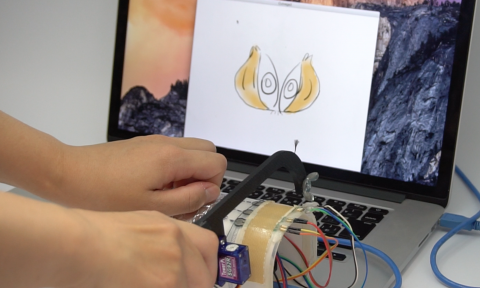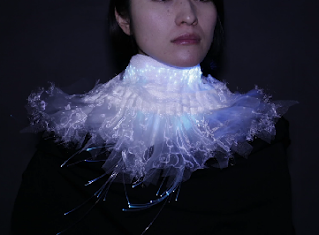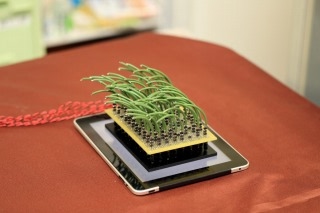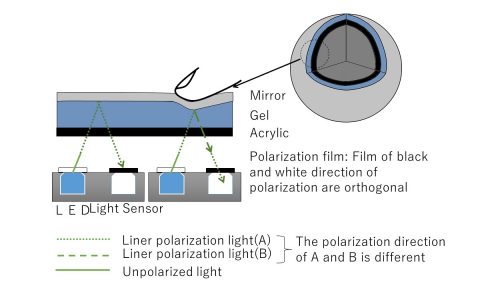KKSe(Kitchen Knife Safety education supporter)
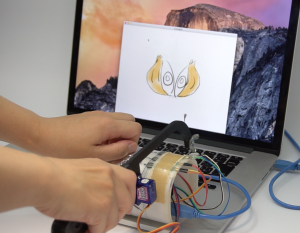 The Kitchen Knife Safety Educator (KKse) is a safety education system designed to teach children how to correctly use cooking knives. Cooking is important for children to learn about what they eat. In addition, that is also important for daily communication between children and their parents. However, it is dangerous for young children to handle cooking knives. Because of this danger, parents often try to keep their young children away from the kitchen. Our proposed system will contribute to not only improving children’s cooking skills, but also improving communication between parents and children. The system composed of a virtual knife with haptic feedback function, a touch/force sensitive virtual food and a two-dimensional force sensitive cutting board. This system was developed to teach a fundamental cutting method, the “thrusting cut”. This paper describes the detail of the system.
The Kitchen Knife Safety Educator (KKse) is a safety education system designed to teach children how to correctly use cooking knives. Cooking is important for children to learn about what they eat. In addition, that is also important for daily communication between children and their parents. However, it is dangerous for young children to handle cooking knives. Because of this danger, parents often try to keep their young children away from the kitchen. Our proposed system will contribute to not only improving children’s cooking skills, but also improving communication between parents and children. The system composed of a virtual knife with haptic feedback function, a touch/force sensitive virtual food and a two-dimensional force sensitive cutting board. This system was developed to teach a fundamental cutting method, the “thrusting cut”. This paper describes the detail of the system.
保護者が安心して児童に包丁調理に対する安全教育を行うための教育システムKitchen Knife Safety education Supporterを提案する.提案システムは児童が食材に応じた安全な切り方,食材の置き方,支え方を習得することを設計指針とし,ユーザの動作に対して包丁型デバイスと食材型デバイスから触覚・視覚・聴覚のフィードバックを行うことでバーチャルに包丁調理を体験させる.本稿では手始めに押し出し切りを教示するシステムのプロトタイプを作成した.運用実験から,包丁調理教育の最初のステップとしての有効性が示唆された.提案システムでの教育を通して保護者の安全教育に対する負担を軽減し,家庭での親子調理を促進することを目指す.
